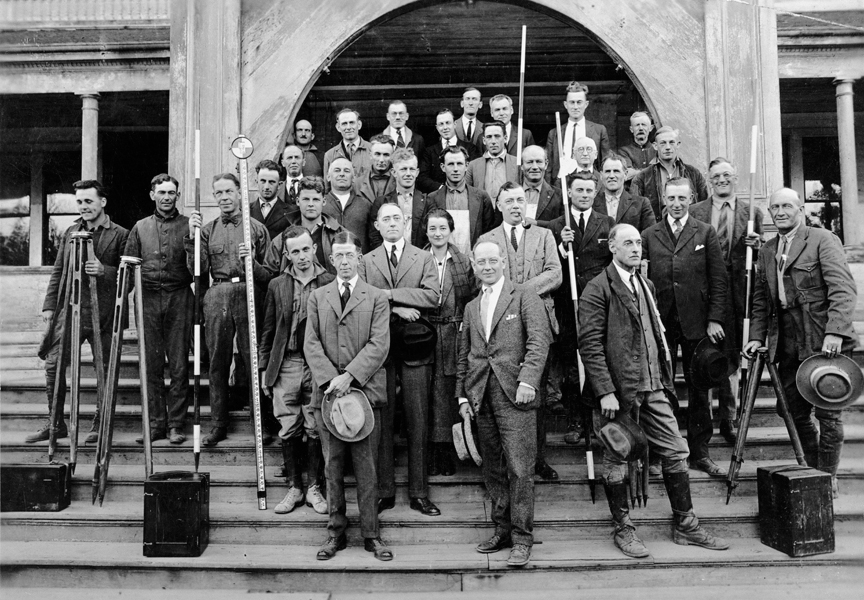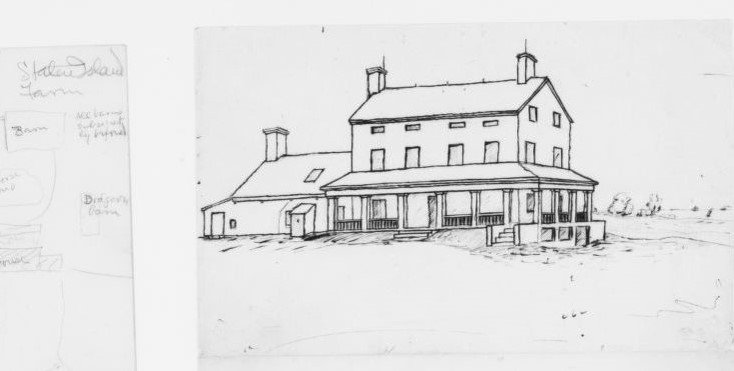
In the mid-1870s Frederick Law Olmsted was invited by the City of Montreal to begin work on Mount Royal Park. 1 He considered it a grander natural canvas than Central Park and sought to more fully combine the sublime and the beautiful on a site that he called “the best opportunity…that had ever been presented to my profession.”2 This project began a lengthy involvement (1874–1946) by the Olmsted firm with Canadian clients. It was a body of work that included about 100 projects stretching from Victoria, British Columbia, on the west coast to Truro, Nova Scotia, on the east. The output is small3 compared to the firm’s work in the United States, but the Olmsted effect was large. It penetrated and profoundly influenced late nineteenth and twentieth century Canadian professional and popular landscape aesthetics.
The firm’s Canadian practice was marked by major public projects, most notably town planning and suburban development. In fact, it could be argued that the planning of the extensive Capilano Estates in greater Vancouver (1931–1938, 1944) significantly sustained the Olmsted firm through the difficult years of the Depression and the Second World War. It is also important to note that the majority of Canadian job listings are for private residential commissions where the wealthy demonstrated their status by securing the top landscape architecture firm in North America to design their gardens.
Frederick Law Olmsted began the firm’s work in Canada. After 1887, the next generation of the firm led the work. John Charles Olmsted completed designs for a number of major planned communities, including Uplands near Victoria, British Columbia, and South Mount Royal and J. Lonsdale Doupe’s Sunalta, both in Calgary, Alberta. Frederick Law Olmsted Jr. concentrated on city planning initiatives, including reports on Montreal’s Metropolitan Park System and the Toronto waterfront. Other Olmsted employees involved in Canadian projects included Percival Gallagher, Edward Clark Whiting and Arthur Asahel Shurtleff. However, of all the firm members it was James Frederick Dawson who is credited with much of the work in Canada. Dawson’s contributions stretched over a three-decade period, focused in the western provinces of Manitoba, Alberta and British Columbia.
The Olmsted firm played a key role during the formative years of Canadian town planning and landscape architecture.4 In addition to the influence they exerted through their built projects, written reports and advice, the employees of the Olmsted firm were prolific writers and public speakers. Some of Canada’s major land owners and municipal civil servants were listening.5 In particular, Olmsted Jr. counseled numerous municipalities to adopt formalized planning processes. He insisted that they establish local bureaucracies to facilitate communication so he could work effectively.6 While many communities may not have achieved an Olmsted-authored plan, the enlightened advice of Olmsted Jr. helped to create a modern planning structure that still exists.
Another legacy of the Olmsted firm was the training and development of landscape architects who went on to form the genesis of the profession in Canada. Three former employees of the firm who were trained in the Olmsted design and planning philosophy helped professionalize landscape architecture and town planning in Canada. They were Frederick G. Todd (1876–1948), Rickson Outhet (1876–1951) and Gordon Joseph Culham (1891–1979).
In 1900 New Hampshire-born Frederick Todd became Canada’s first professional landscape architect when he established an office in Montreal. His interest in the city developed while working for the Olmsted firm on Mount Royal Park. He was involved in numerous projects across Canada, most notably producing an influential though unrealized 1901 plan for Ottawa,7 the nation’s capital. Todd became one of Canada’s most prominent landscape architects.
A contemporary of Todd’s was the Montrealer, Rickson Outhet. Though not formally trained in landscape architecture he learned his trade in the Brookline office of the Olmsted firm. Inspired by his work in the United States, including being draftsman to the McMillan Commission in 1901, he returned to Montreal in 1905 and advertised himself as both a landscape architect and town planner. Outhet became involved in the Province of Quebec Association of Architects’ Civic Improvement Committee and the “Plan for the Improvement of Montreal” that included a series of city planning schemes.8
The third alumnus was Gordon Joseph Culham, also a Canadian and part of a later generation of Olmsted firm employees. He returned to Canada in the early 1930s after six years of work on various Olmsted projects such as the Cloisters in Fort Tryon Park, New York City, the State Capitol grounds in Olympia, Washington, and most importantly New York City’s Regional Plan.9 Culham returned upon the invitation of Canadian publisher John Bayne Maclean,10 who was a great admirer of the Olmsteds and had employed the firm on several projects. In the end he decided he needed an Olmsted-trained man closer to home, hence his proposal to Culham.11 Maclean’s commissions were to become the nucleus of Culham’s Canadian practice.12 In 1934 Culham was instrumental in creating the Canadian Society of Landscape Architects and became that organization’s first president.13
It is worthwhile to distinguish Canadian projects from the broader Olmsted canon because, as citizens of a younger nation, Canadians chose to engage the more experienced Olmsted firm to address the challenges of urbanization, open space planning and suburban expansion. As members of the Empire, the Canadians also turned to influential British town planners and landscape designers such as Thomas Mawson and Thomas Adams. However, as the Canadian job list so clearly illustrates, it was the Olmsted firm that had a profound influence on the development of landscape architecture practice in Canada.
From Lucy Lawliss, et al. The Master List of Design Projects of the Olmsted Firm 1857-1979. District of Columbia: National Association for Olmsted Parks and National Park Service, 2008.
From Nancy D. Pollock‐Ellwand. The Olmsted firm in Canada: a correction of the record. (Taylor & Francis Group in the UK holds permission rights for this 2006 paper. It refines the information contained in the above. Read the paper here.)
Notes:
1 Telegram from P. O’Meara, Secretary, City Hall, Montreal, October 5, 1874. Frederick Law Olmsted Papers, Library of Congress.
2 Frederick Law Olmsted, Mount Royal: Montreal (New York: G.P. Putnam’s Sons, 1881): 13.
3 Of the 95 projects 40% were mere inquiries; in 14% of the listings advice was sought and given; reports were written and not acted upon in 9%; reports written and partially built in 5%; and finally in 32% of the Canadian job listings reports were written and fully executed. (Nancy Pollock-Ellwand, “The Olmsted Firm in Canada: A Correction of the Record” in Planning Perspectives. 21, no. 3 (July 2006): 289).
4 In Canada, the Town Planning Institute was formed in 1919, representing a range of practitioners interested in the reform of city design, regulation and governance. In 1934, the Canadian Society of Landscape Architects (which for a time included town planners) was formed. In the United States the situation was reversed, with the American Institute of Planners being created in 1917, almost two decades after the American Society of Landscape Architects was formed in 1899. A major catalyst in the early years of Canadian landscape thought was also the Commission of Conservation (modeled after Theodore Roosevelt’s National Commission), which formed in 1909 as an arms length watchdog on natural and human resource management and protection. The first Town Planning Advisor was Thomas Adams. See Alan F. J. Artibise and Gilbert Arthur Stelter, “Conservation Planning and Urban Planning: The Canadian Commission of Conservation in Historical Perspective,” in R. J. P. Kain (ed.), Planning for Conservation (New York: St. Martin’s Press, 1981): 17–36.
5 See Charles E. Beveridge and Carolyn F. Hoffman, eds., The Master List of Design Projects of the Olmsted Firm 1857–1950 (Boston, MA: Massachusetts Association for Olmsted Parks, 1987) e.g., City of Toronto Waterfront, 1912; City of Montreal Metropolitan Park System Report, 1910; Canadian Pacific Railway’s South Mount Royal, Sunalta and Bridgeland, 1909–1910; Hudson Bay Company’s Mount Royal Heights, Prince Albert, Saskatchewan, 1913–1914.
6 See Master List e.g., The City of Calgary, 1910; Halifax, 1911; London, Ontario, 1919.
7 Nancy Pollock-Ellwand, “Gréber’s Plan and the ‘Washington of the North’: Finding A Canadian Capital in the Face of Republican Dreams”. Landscape Journal. 20(1), 2001: 48–61.
8 Unpublished Outhet Papers; and For a Better Montreal. Report of the First Convention of the City Improvement League. (Montreal: City Improvement League, 1910): 49.
9 Olmsted Employee Records, Frederick Law Olmsted National Historic Site.
10 Olmsted Associates Records, series B, Job #6722, Library of Congress.
11 Floyd S. Chalmers, A Gentleman of the Press (Toronto: Doubleday Canada Ltd., 1969): 306.
12 Gordon Culham in a letter to his wife Jessie, May 6, 1919, Unpublished Culham Family Papers: 233.
13 “Landscapers Unite: Form Society Under Presidency of Gordon Culham”, Toronto Star. March 7, 1934: 10.











